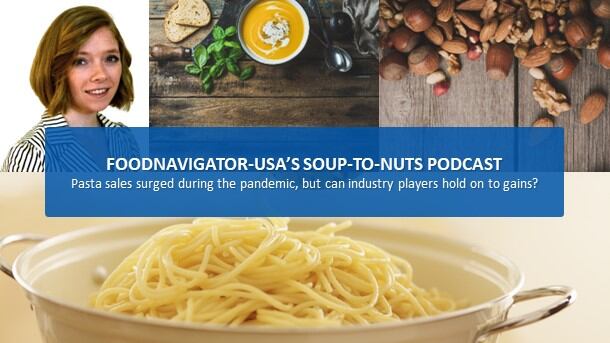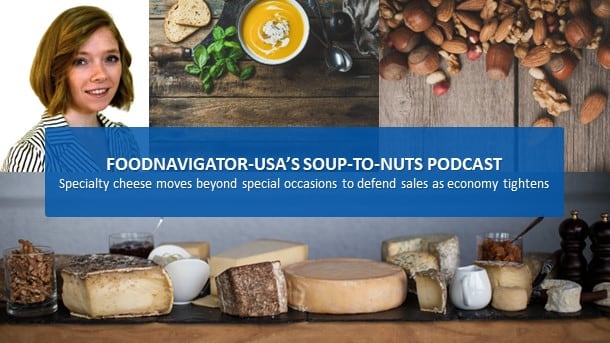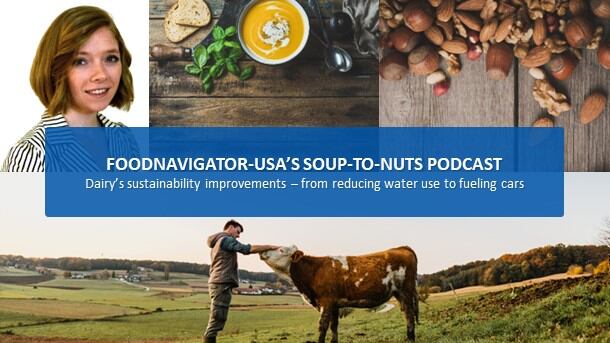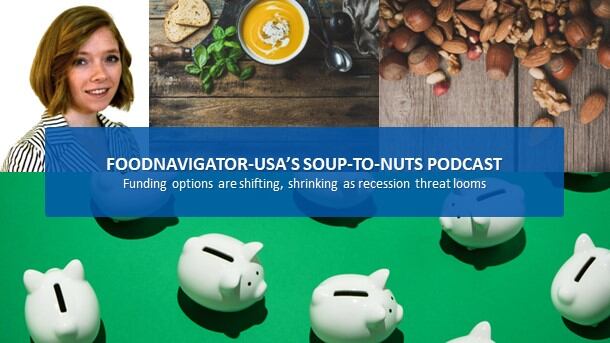According to data from the Chicago-based marketing firm IRI presented at the Summer Fancy Food Show in New York last month, pasta sales grew a whopping 26.64% from $1.17b in 2019 through January 2021 when sales reached $2.75b. This is a tremendous departure from the years leading up to the pandemic, when according to Statista volume consumption of pasta was relatively flat from 2016 through 2019 after dipping slightly in 2016 – around the time when carb-counting, gluten-free and fear-mongering around grains were hitting their stride.
As the threat of COVID-19 slowly moves from pandemic to endemic and consumers regain their mobility and ability to eat out, IRI data shows pasta sales have waned, but at $2.42bn last year they remain a notable 11.3% higher than pre-pandemic levels in calendar year 2019.
The challenge for the pasta industry now is how to maintain and build on this growth going forward.
In this episode of FoodNavigator-USA’s Soup-To-Nuts Podcast, players from across the pasta category who showcased at the Summer Fancy Food Show share strategies for how they are capitalizing on the category’s growth through innovation, premiumization and quality improvements, debunking concerns about pasta’s healthfulness and leveraging consumers’ ongoing desire for restaurant quality meals at home. They also share they how emerging challenges, including inflation, geo-political turmoil and supply chain challenges are impacting the pasta industry and what they are doing to overcome hurdles and seize opportunities.[Editor’s Note: Never miss an episode of FoodNavigator-USA’s Soup-To-Nuts podcast – subscribe to us today.]
The current landscape and what happened during the pandemic
While much of the initial spike in pasta sales during the pandemic can be attributed to consumers seeking comfort and convenience, Tom Quinn, the executive vice president and chief operating officer at Nuovo Pasta Productions, predicts that creativity will play a larger role in driving future sales – elevating the need for innovation.
“The consumer is reaching out for any kind of lifeline or distraction they can get,” including great food they can enjoy as an escape from the every day, Quinn said.
He added that pasta is well suited to fit this need because it is a great value option with a low cost of admission, but also can be luxurious, such as fresh prepared ravioli with multi-colored dough.
Consumers also increasingly want to replicate the dishes that celebrities like Anthony Bourdain and Stanley Tucci introduced them to through television, social media and other outlets, which Quinn said is opening the door for innovation around regionalization.
Innovative new shapes, like the famed Cascatelli created by the host of the podcast The Sporkful Dan Pashman and boutique pasta maker Sfoglini last spring also are helping to reinvigorate consumer interest in and sales of pasta.
According to Scott Ketchum, CEO and co-founder of Sfoglini, there are more 600 pasta shapes – each bringing its own sense of whimsy and culinary purpose – but many of which are unknown to consumers. As Ketchum explains, he is trying to change that through his work both with Pashman and more broadly at Sfoglini.
“Our mission is trying to revive shapes that have kind of disappeared off the shelf over the years,” which can make dishes both visually appealing and complement the ingredients by better delivering sauce or vegetables or the protein served alongside the pasta, Ketchum said.
Estimating it had been almost 80 years since the last pasta shape was invented, Pashman and Sfolini worked together to create a new shape that could inspire consumers with its appearance, taste and function.
Beyond shape, Ketchum said he sees potential for innovation in pasta around flavor, such as kale and turmeric, and educating consumers with recipes about the many ways to use it beyond just with red sauce.
Convenience remains paramount
While innovation is essential for driving future pasta sales, Quinn repeatedly emphasized that it cannot come at the expense of convenience, which is becoming increasingly important as the world reopens and consumers are pulled in multiple directions.
Citing data from Mintel’s 2021 report on The Future of Pasta, Rice and Noodles, Quinn added that 53% of consumers anticipate using convenience foods in the future and 76% say they are looking for foods that are easy to prepare.
Reframing pasta’s health positioning
Consumers also increasingly want products that deliver a strong nutritional proposition – which has been pasta’s downfall pre-pandemic, but which Quinn said can be turned around through positive messaging.
“With the National Pasta Association, we’re heavily focused on positive messaging,” including the high fiber and protein content in good quality pasta and that yes the carbs may be high, but they offer sustained energy rather than a fast peak and crash, he said.
Ketchum added that adding spices, vegetables and using different types of grains can also boost the nutrient profile of pasta.
Emerging challenges
While opportunities abound for pasta going forward, industry stakeholders also must balance growth with emerging challenges around supply and their ability to meet demand.
For example, sourcing sufficient flour and oil may become a challenge going forward as the war between Russia and Ukraine drags on.
Quinn explained that the type of wheat grown in Russia and Ukraine are not the ones favored by most pasta makers, rather they tend to perform better in baked goods. However, as players in other segments feel the pinch they may start to source other types of wheat or from other regions – including the US, which could constrain supply for the pasta industry.
Likewise, he said, Ukraine is a top producer of sunflower oil and as supply becomes tighter, the pasta industry and others that align closely with it (such as for sauces, pestos and toppings) may need to rethink how and where they source oil.
A bigger supply challenge for Sfoglini has been packaging, said Ketchum, who explained he is “basically hoarding paper” as the situation is getting worse.
Labor is another major challenge for Debbie Chidester of Plentiful Pantry, which makes a wide variety of pastas in different shapes, textures, flavors and colors. She explains that insufficient staff means she has to think carefully about which orders she accepts and can fill.
During the pandemic, Chidester said she had to cancel large, high margin orders in order to fill previous commitments because she didn’t have enough staff to do both.
To recruit and retain employees, Chidester offers more than competitive wage – she tries to offer family friendly policies and practices grace by allowing employees who want to return after leaving for less than a month to do so with the same benefits they had before, including any vacation time.
Beyond the immediate challenges of staffing, supply chain struggles and inflation, Ketchum said his biggest concern is climate change and how it is reshaping not just the pasta category but all of food and beverage.
“I’m worried about climate change. I watch the heatwave rising all over the country and am worried about the crops this year,” he said.
He explained Sfolini is taking several measures to reduce waste, energy use and other limited resources, and says he hopes others in the industry will take similar actions.
While these certainly are big concerns without clear answers, Quinn stressed that the future is bright for the pasta segment and noted that each challenge also brings opportunities – it is just up to players to identify and seize them.




